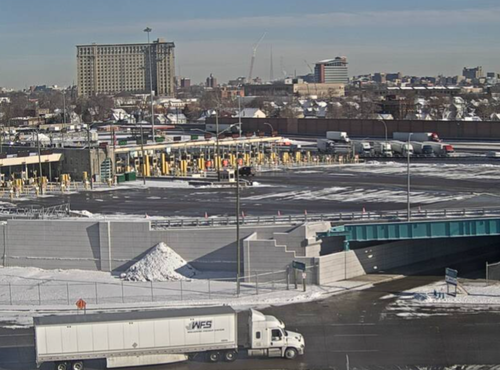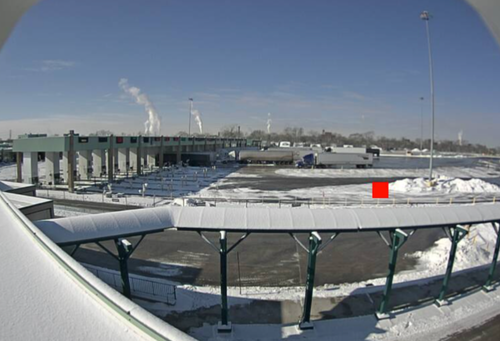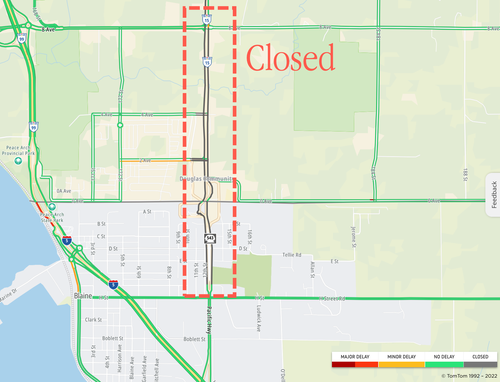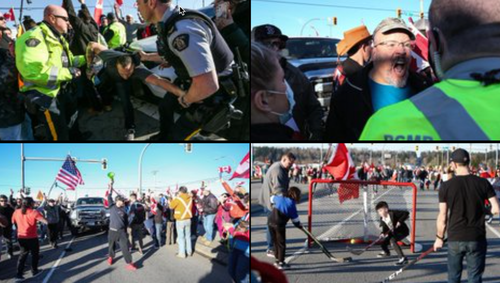Canadian Broadcasting Corporation has learned that Prime Minister Trudeau “will inform the provinces he will invoke the Emergencies Act to give the government extra powers to deal with the protests across the country. But in a meeting with the Liberal caucus, the PM said there were no plans to deploy the military.”
The move follows a meeting Sunday of the federal cabinet and its Incident Response Group (IRG).
Trudeau tweeted late Sunday that the IRG discussed “further actions the government can take to help end the blockades and occupations.”
Earlier that day, Emergency Preparedness Minister Bill Blair told CBC’s Rosemary Barton Live that the federal government has discussed invoking special emergency powers to deal with ongoing protests in Ottawa.
Blair described the attitude around invoking the Emergencies Act as “appropriate caution” rather than “reticence.”
As CBC concludes, the law gives the federal government carte blanche to cope with a crisis, including the ability to enact emergency powers that allow it to prohibit travel within a specified area or remove personal property, while imposing fines or jail time on people contravening new orders.
This is basically the ability to unleash ‘selective’ martial law on Canadians.
This comes after reports on Sunday, Canadian officials cleared the roadway and arrested “Freedom Convoy” demonstrators who held the line and blocked the busiest U.S.-Canada border crossing for nearly a week. Canadian officials confirmed the bridge reopened earlier Monday morning as Prime Minister Justin Trudeau is expected to invoke emergency powers to squash protesters around the country.
Traffic cameras on Ambassador Bridge, which connects Windsor and Canadian automotive plants with Detroit, show increased traffic flows around 0930 ET in both directions, into the US, and into Canada.
“Today, our national economic crisis at the Ambassador Bridge came to an end,” declared the mayor of Windsor, Drew Dilkens.
Bridge Camera (Into the US)

Bridge Camera (Into Canada)

While the bridge’s reopening has been called a success by the government, demonstrators against medical tyranny disrupted hundreds of millions of trade between both countries. Bloomberg reports the price of the six-day shutdown cost a whopping $13.5 million an hour in traded goods and forced carmakers to shutter or limit production at plants in Ontario and Detroit.
About 500 miles northeast of Windsor, CBS News reports protesters in Ottawa, Canada’s capital, continue to “paralyze downtown.” The occupation of Ottawa has incited a movement across the country of freedom-loving people creating congestion across highways, metro areas, and border crossings — all because they’re fed up with Trudeau’s vaccine mandates and restrictions.
The government is struggling to quell the assembly of freedom-loving people from across the country as Trudeau’s government plays Whac-A-Mole” to squash protesters where every they show up.
The latest is in Surrey, British Columbia, where protesters have shuttered a border crossing. Freedom never sleeps as a stretch of Highway 15 remains shut down, preventing traffic from entering the US. Data from geolocation technology company TomTom shows part of the highway is closed.

Various highway traffic cameras (data sourced from the British Columbia government) confirm the closure.
Still ongoing… https://t.co/DSuCNENTfC pic.twitter.com/H6HprRC1Uj
— AM730Traffic (@AM730Traffic) February 14, 2022
Twitter is full of pictures and videos from over the weekend of people gathering on and around the highway to voice their opinion against the government’s dystopic vaccine mandates and restrictions.

Even as Ambassador Bridge reopens, protesters continue blockade movements across the country at critical chokepoints that could unleash economic pain for the Canadian economy, something the Bank of Canada has called “very distressing.”
The revolts have yet to be squashed as it appears Trudeau won’t submit to protester demands.
Republished from ZeroHedge.com with permission










Sign up on lukeunfiltered.com or to check out our store on thebestpoliticalshirts.com.